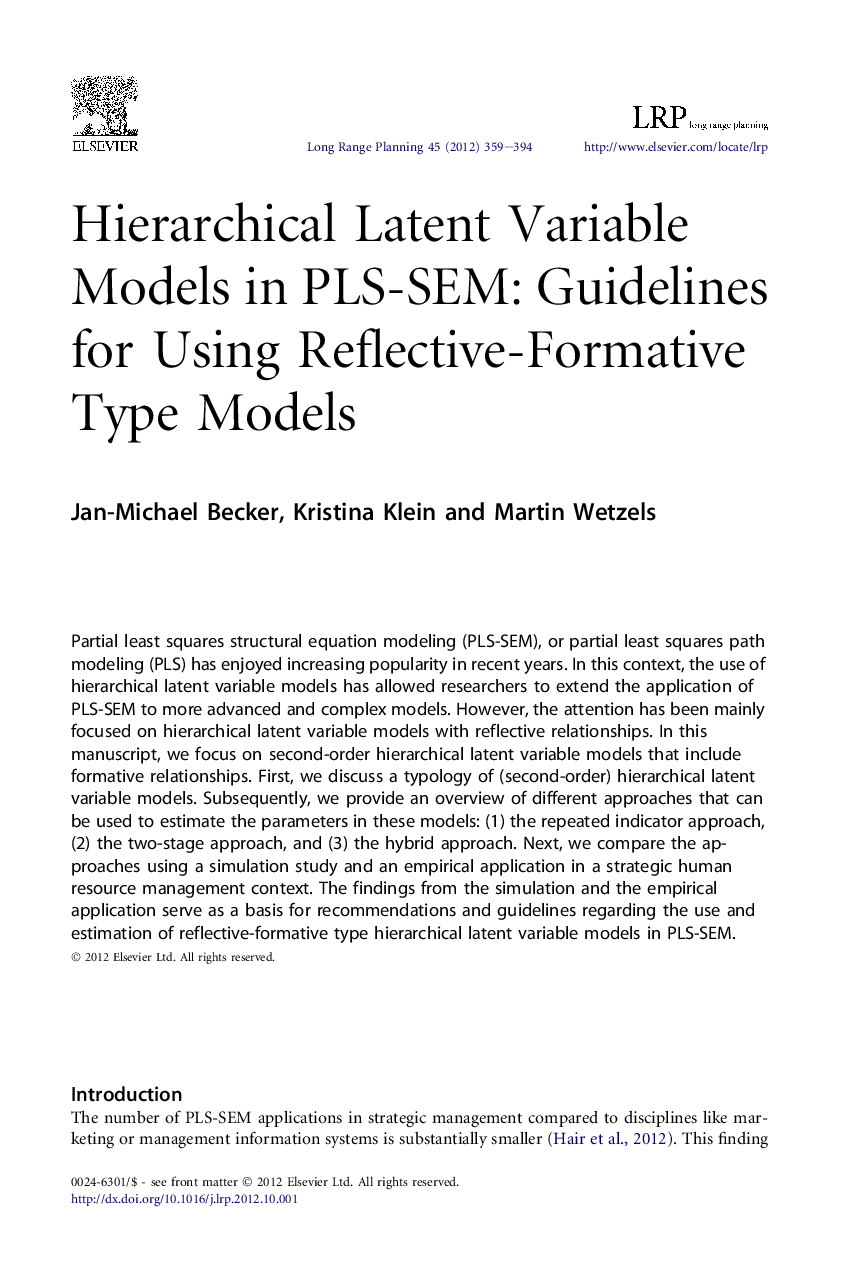| Article ID | Journal | Published Year | Pages | File Type |
|---|---|---|---|---|
| 1021334 | Long Range Planning | 2012 | 36 Pages |
Partial least squares structural equation modeling (PLS-SEM), or partial least squares path modeling (PLS) has enjoyed increasing popularity in recent years. In this context, the use of hierarchical latent variable models has allowed researchers to extend the application of PLS-SEM to more advanced and complex models. However, the attention has been mainly focused on hierarchical latent variable models with reflective relationships. In this manuscript, we focus on second-order hierarchical latent variable models that include formative relationships. First, we discuss a typology of (second-order) hierarchical latent variable models. Subsequently, we provide an overview of different approaches that can be used to estimate the parameters in these models: (1) the repeated indicator approach, (2) the two-stage approach, and (3) the hybrid approach. Next, we compare the approaches using a simulation study and an empirical application in a strategic human resource management context. The findings from the simulation and the empirical application serve as a basis for recommendations and guidelines regarding the use and estimation of reflective-formative type hierarchical latent variable models in PLS-SEM.
